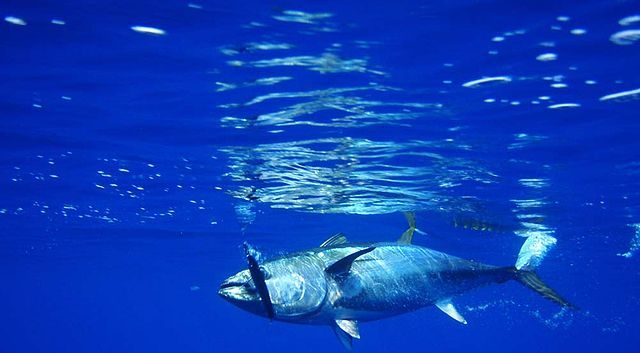The commercial haul of the Pacific bluefin tuna (Thunnus orientalis) will increase by 80% in the 2025-26 American season, following successful restocking.
The decision by the Inter-American Tropical Tuna Commission in September 2024 to increase catch limits owes to findings of ample restocking.
Earlier in June, the International Scientific Committee for Tuna and Tuna-Like Species in the North Pacific Ocean had announced an impressive population recovery.
The good news will give commercial and sport fishermen on the southern California coast a field day next season. Indeed, fishermen will land a maximum 1,822 tonnes of the fish in the 2025-26 season, up from 2023-24’s 1,017 tonnes.
All this thanks to close angling regulation on the West Coast and the south Pacific territories of the United States.
The U.S. institutes a yearly review of the catch limits to promote restocking, courtesy of the Western and Central Pacific Fisheries Commission (WCPFC).
WCPFC tightened limits beginning 2013 when it emerged that the Pacific bluefin tuna stock was down 96.4% from a long-term perspective.
The most significant change was in 2022 when the commission increased the catch limit for 30 kg fish by 15%.
This followed two positive assessment reports, with the first one being the removal of the Atlantic bluefins from the Red List status in 2021. The second review was the discovery of rapid restocking of juvenile Pacific bluefins in 2022. Additionally, the U.S. as a member of the South Pacific Tuna Treaty benefits whenever there is a boost in the ocean’s tuna stock.
So, restocking efforts have overturned the grim population results that have hang over the bluefin tuna sector since 2012. And as the following statistics show, the Pacific fish still remains an important fishery resource for the United States.
U.S. Pacific Bluefin Tuna Statistics
As the largest tuna species, the Pacific bluefin tuna is a lucrative catch even when in low quantity. For instance, in 2022, total commercial landings in the U.S. for the fish were only 368 tonnes (over 800,000 pounds) but still generated $2.2 million. This despite the fact that the Pacific bluefin tuna haul represents only 2% of American commercial landings on the eastern Pacific.
How does commercial landings revenue differ between Atlantic and Pacific Bluefin Tuna in U.S.’ waters?
Atlantic bluefin tuna fisheries bring six times the revenue of their Pacific counterparts. While Pacific bluefin tuna delivered $2.3 million in turnover in 2022, the Atlantic equivalent garnered $12.1 million the same year. The U.S.’ Atlantic catches account for almost 10% of all Atlantic-wide landings by all countries, including France. The U.S. also commands over 50% of all bluefin catches on the Western part of the Atlantic.
Which is bigger between the two species found in American waters?
Though both are large, the Pacific bluefin at between 0.8 and 2 meters in length is slightly smaller than its Atlantic counterpart.
